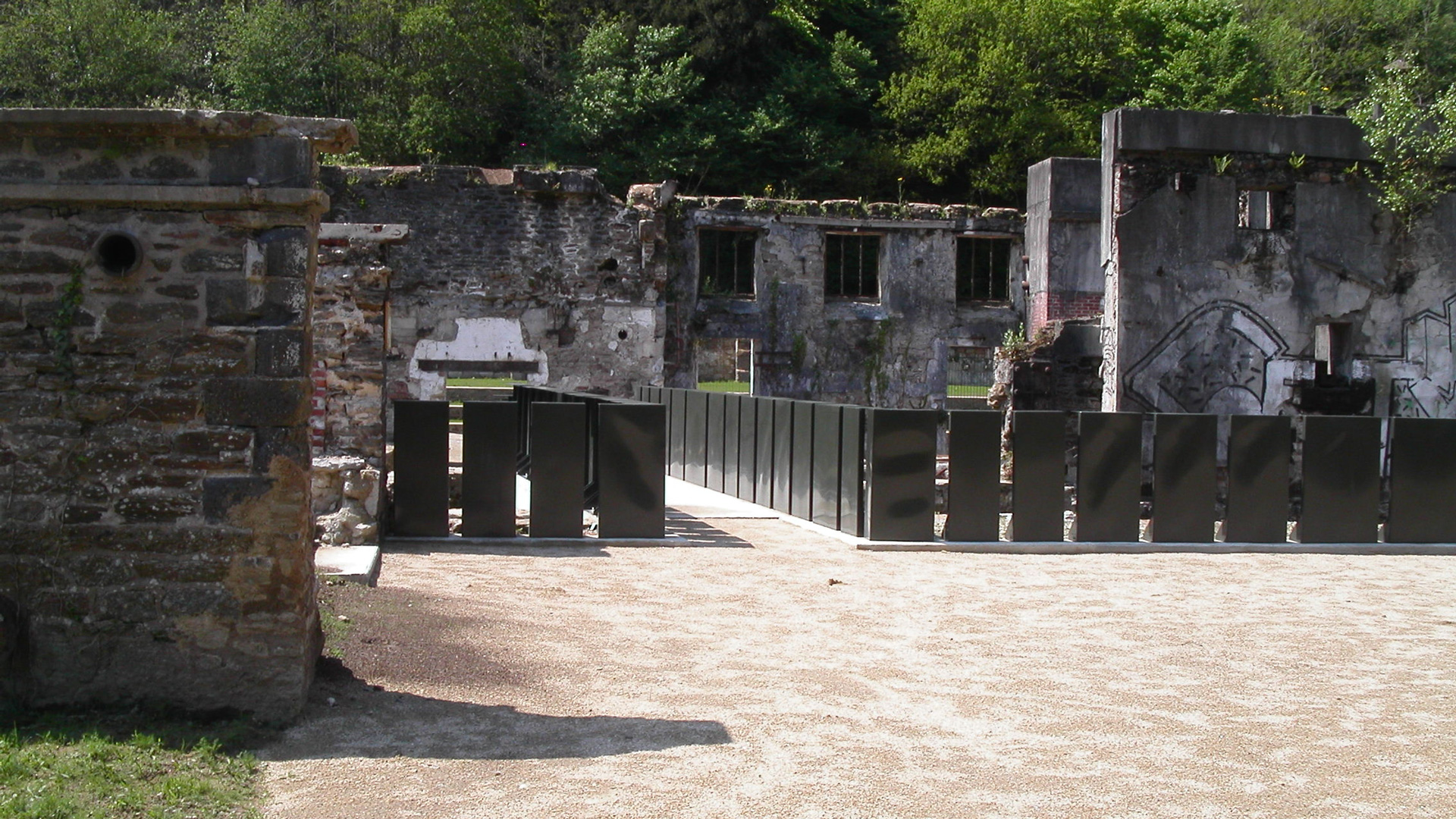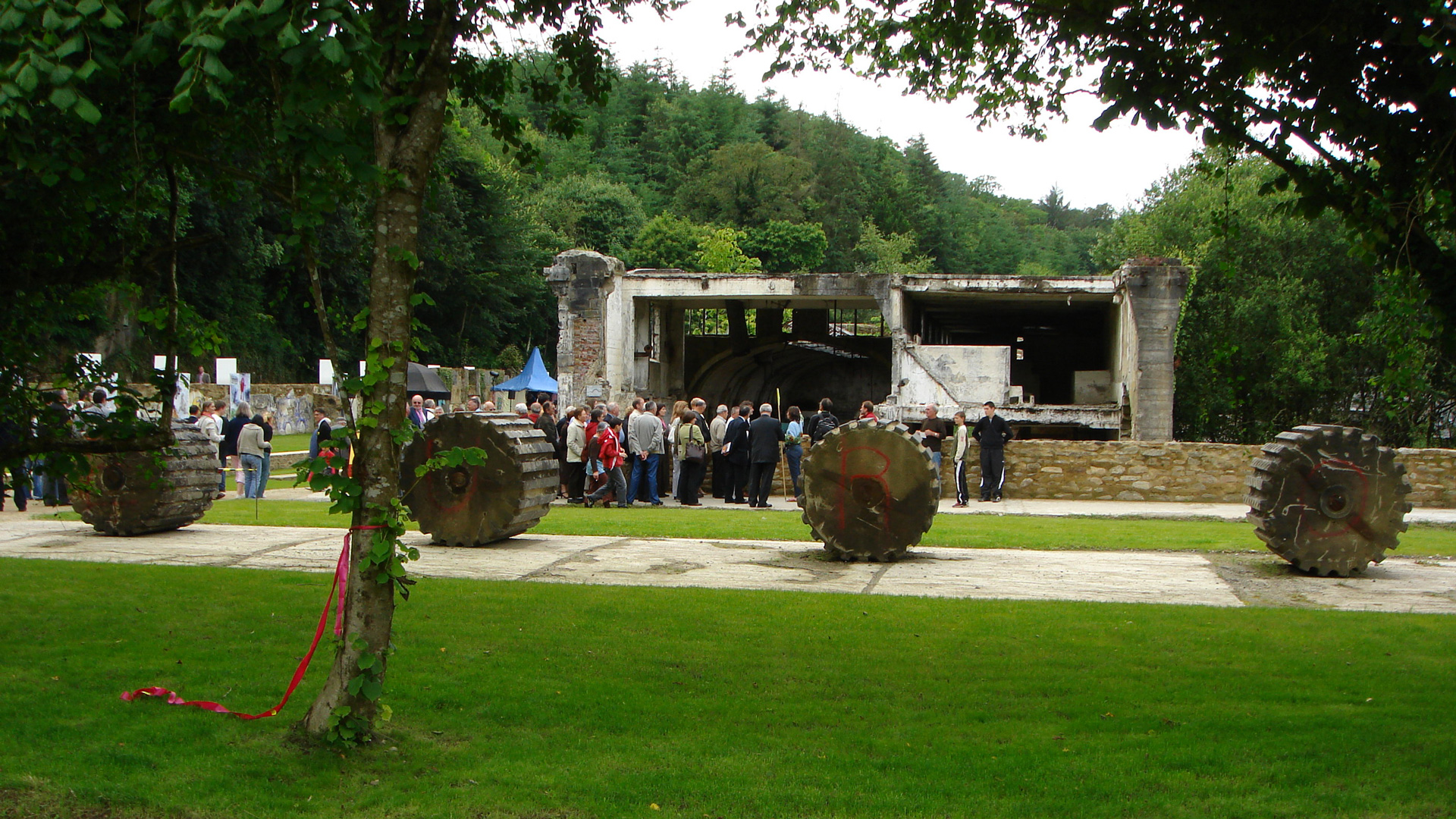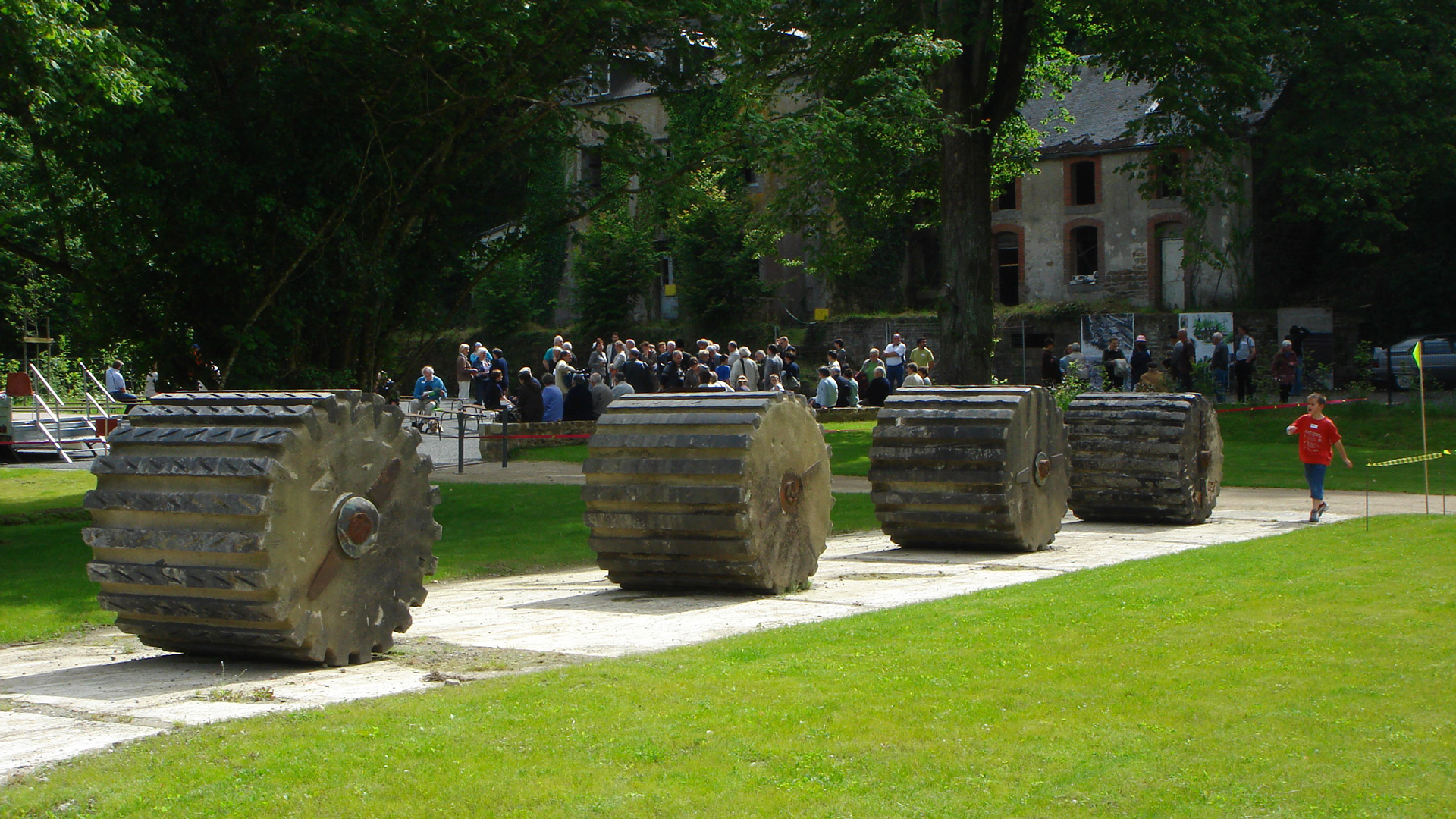Clean-up of the former Vallée paper mill – BELLE-ISLE-EN-TERRE and PLOUNEVEZ-MOËDEC (Côtes-d’Armor)
RetourCompletion year 2007
Contracting Authority Belle-Isle-en-Terre and Beg-Ar-C’hra Federations of Municipalities
Mission Cleaning and securing a former industrial facility
Project Management Team NR consulting engineers (mandated agent), Landscape architects and designers Laure Planchais, Atelier 59 (signage), Ubiscène (scenography and cultural engineering)
Surface area 2 hectares
Budget €800,000 exc. VAT
Ratio €40 exc. VAT per m²
Founded in 1855 and located in Brittany, the Vallée paper mill gradually spread along the Léguer Valley, since the river supplied all of its water and electric power needs. The plant closed down in 1965, yet its industrial past has endowed it with a powerful social and affective presence among the local rural population. The plant’s land was purchased by two federations of municipalities in the 90s. Their intent was to clean up the site and make it safe. It was while inspecting the facility that it became obvious how attached the former workers were to their factory, some of whom were still coming to visit the site every day despite four decades of total neglect. We decided to get involved beyond the mere technical assignment in a bid to rekindle the powerful poetic and affective vibe that pervaded the area.
The project was structured around four avenues for consideration:
- The site’s industrial past: the presence of water (which was the reason for the paper mill in the first place) led to the creation of hydraulic devices. The project brings out how the water was tamed, how far the former factory stretched, and it reveals the sculptural nature of the remnants which we have highlighted.
- The site’s geographic scope: The project exposes the relation between the site’s complex topography and the overall topography of the entire valley: docks, balconies over the water, lookouts to take in the whole view.
- The site’s ecological challenges: A listed NATURA 2000 site, it is bolstered and enhanced by the project and its forceful environmental approach:
- All demolition waste was recycled on site, and machine parts from the former factory are being reused
- Reclaiming work was performed on the riverbanks, trees were planted, seedbeds from the site were secured, and an experimental garden was created to observe natural fallow cycles
- A habitat was set up for bats in the factory’s basement
- The site’s artistic potential: We kept the existing graffiti on certain facades for it fitted well with the site’s features. In addition, the project provides various infrastructures that could host art events (tiered seating, a stage area, pedestals for sculptures) with a view to giving the site a second life.
Feedback (last visit in 2015)
- There were no prior discussions with the contracting authority about the art sculptures involved in the site’s renewal project, and so the artworks are not exactly “on par” with the rest on an aesthetic level. Pity!
- The same goes for the signage, which is really inconsistent and where the worst can be seen side by side with the best. Fortunately, “the worst” is not too visible.
- The site appears to be well managed, showing just the right amount of “slack” to ensure that the venue retains its melancholy charm.
- Every year, the site hosts cultural and art events. Also it is listed in a number of Brittany tourist guides, including Guide du Routard.
- On several occasions, I met former project workers strolling through with their family. This means that the memory of the site is alive and well, and that’s the main thing!










